If you think the creatures from your childhood bedtime stories were eerie, wait until you hear about the real-life monsters that call the ocean’s depths home. These aren’t your run-of-the-mill fish—these are the elusive, strange, and sometimes downright terrifying beings that inhabit the parts of the ocean where sunlight can’t reach.
1. The Anglerfish: Nature’s Deep-Sea Lure
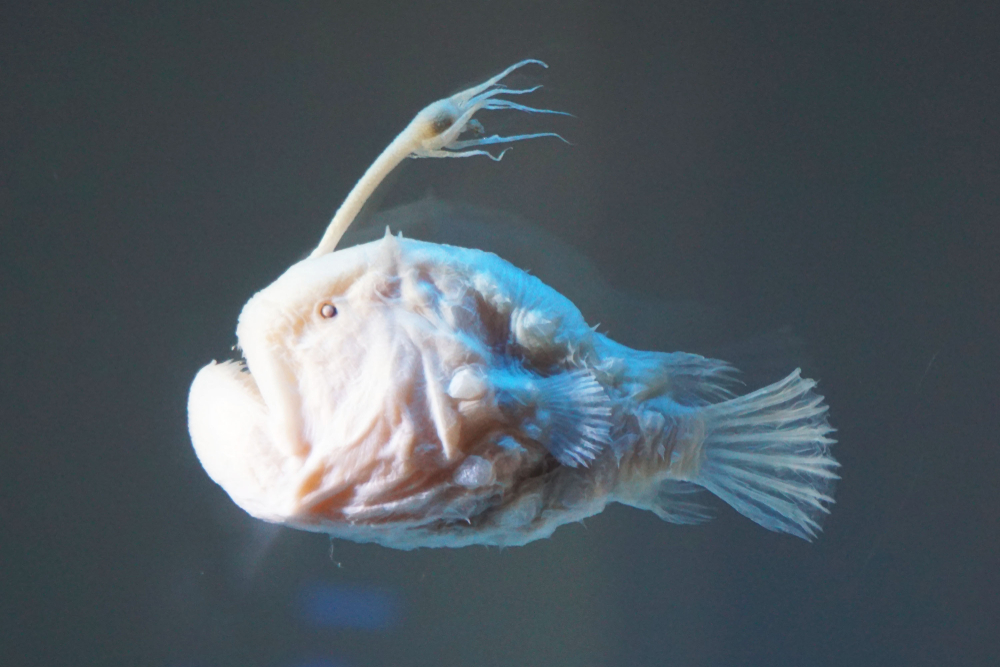
Ever seen an underwater creature that looks like it’s carrying a flashlight? Meet the anglerfish, the ocean’s own nightmarish angler, luring prey into its jaws with a bioluminescent lure on its head. Found in the pitch-black depths of the Atlantic and Antarctic oceans, this fish is the stuff of legends—and nightmares. Its gruesome appearance, with sharp, needle-like teeth and a ghastly grin, means it’s well-equipped for life in the deep sea. According to the Smithsonian Magazine, despite its size—typically no larger than a foot—its built-in “fishing rod” makes it a master of ambush predation.
But don’t let its freaky look fool you; the anglerfish has a fascinating biology. Only the females possess the signature lure, while the much smaller males spend their lives searching for a mate. Once a male finds a willing female, he bites into her skin and fuses with her, eventually becoming a sort of parasitic appendage. Imagine dating that way! The anglerfish is a true wonder of the ocean, both terrifying and captivating in its unique adaptation to deep-sea living.
2. The Giant Squid: Kraken of the Deep
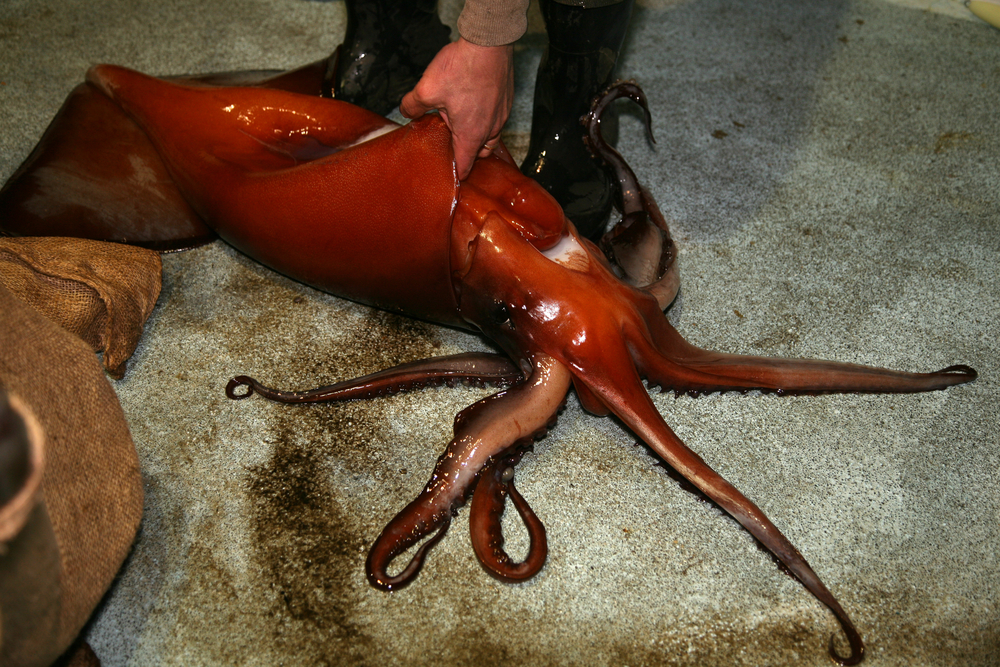
For centuries, sailors told tales of enormous sea creatures that could drag ships down into the abyss. They weren’t entirely wrong; those stories were likely inspired by the elusive giant squid. These magnificent creatures can grow up to 43 feet long, making them one of the largest invertebrates on the planet. With their massive eyes, the size of dinner plates, to help navigate the dark, and tentacles lined with sharp suckers, these squids are perfectly adapted to life miles below the surface. NOAA reports that in 2019, researchers captured rare footage of a giant squid in the Gulf of Mexico, providing valuable insights into these elusive deep-sea creatures.
Unlike most sea creatures, the giant squid remains a great mystery to scientists. Rarely seen alive, they inhabit deep ocean waters and have only been studied extensively from carcasses that wash ashore. Their elusive nature fuels the imagination and keeps researchers intrigued. However, recent technological advancements in submersibles have led to a few incredible video captures of these sea giants in their natural habitat, offering a tantalizing glimpse into their secretive lives. They truly embody the mystery and wonder of the deep sea.
3. The Goblin Shark: The Living Fossil
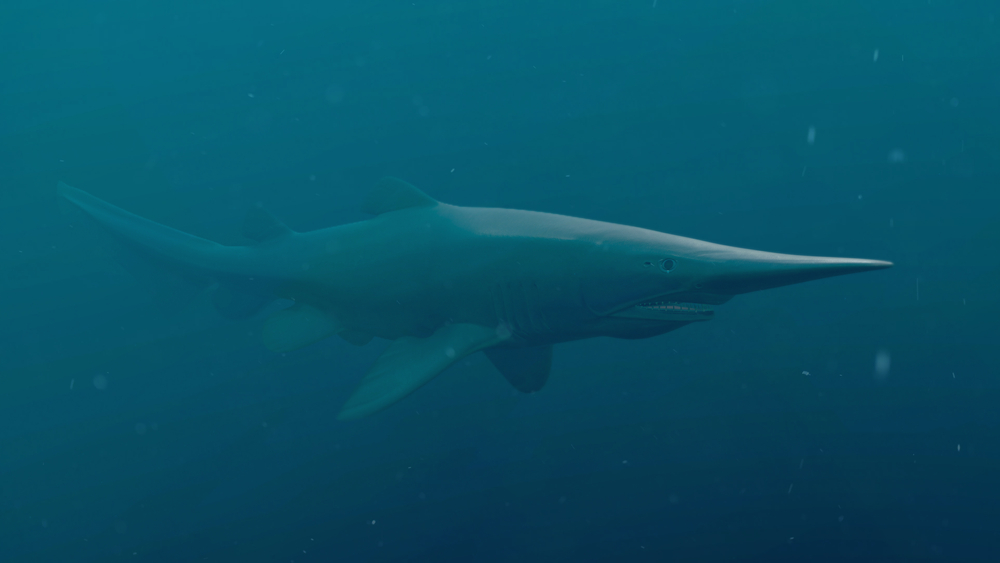
If you’ve ever seen a picture of a goblin shark, you’d probably think it’s from another planet. Dubbed a “living fossil,” this bizarre-looking creature resides in the deep waters of the Atlantic, Indian, and Pacific Oceans. Known for its elongated snout and protrusible jaws filled with nail-like teeth, the goblin shark is perfectly designed for slurping up unsuspecting prey. Its pinkish hue, due to visible blood vessels underneath its translucent skin, gives it a slightly eerie, ghostly appearance.
The goblin shark’s ancient lineage dates back around 125 million years, making it a relic of the past. Despite its fearsome appearance, it poses no real threat to humans and is rarely encountered due to its deep-sea habitat. Scientists remain fascinated by its unique features and evolutionary adaptations, which have allowed it to survive relatively unchanged for millions of years. If there ever was a creature that seemed to swim out of a prehistoric ocean, this would be it.
4. The Vampire Squid: Master of Disguise
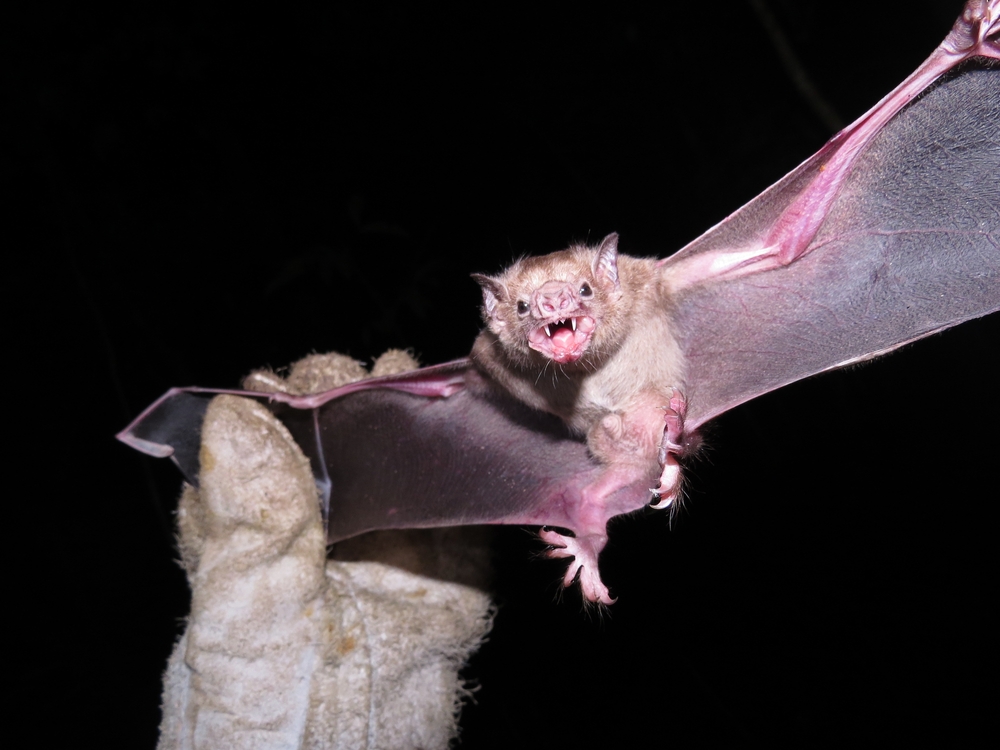
Don’t let the name scare you—while the vampire squid sounds like something out of a horror movie, it’s more of a master illusionist than a bloodsucker. Dwelling in the oxygen-deprived depths of the ocean, this creature is adept at surviving in places few others can. Its cloak-like webbing and bioluminescent abilities allow it to blend into its dark surroundings or confuse predators. When threatened, it turns itself inside out, presenting its spiny arms, and releases a bioluminescent mucus to dazzle and confuse any would-be attackers.
Remarkably, the vampire squid doesn’t feed on the blood of its prey but rather subsists on marine detritus, making it more of a garbage cleaner than a vampire. It employs a pair of long, retractable filaments to capture organic debris drifting down from the upper layers of the ocean. Despite its ghoulish name and appearance, the vampire squid is a gentle and fascinating denizen of the deep. It perfectly exemplifies the unique evolutionary paths marine life can take in the ocean’s darkest realms.
5. The Frilled Shark: Serpent of the Sea
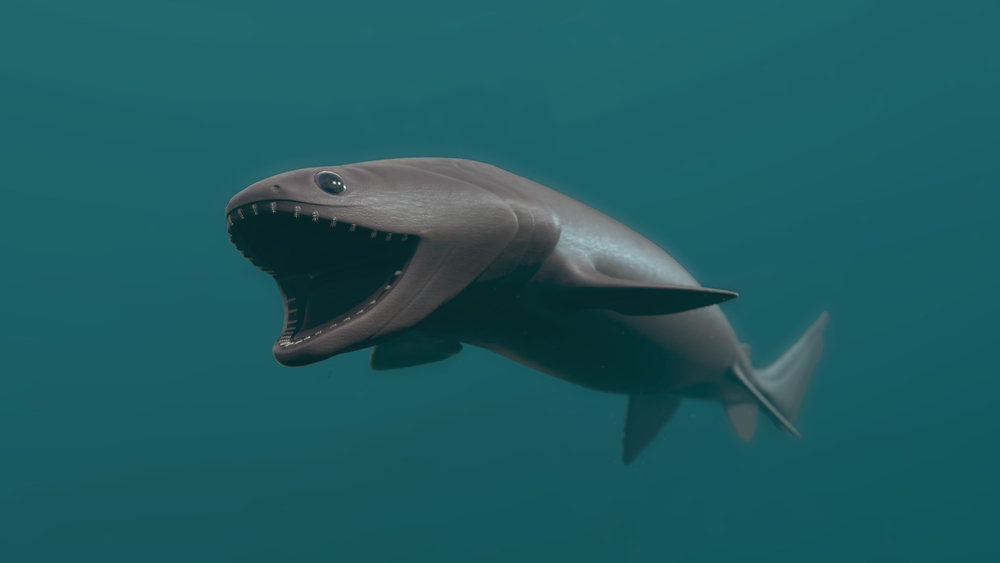
The frilled shark looks like something straight out of a prehistoric ocean, with its snake-like body and rows of needle-sharp teeth. Often referred to as a “living fossil,” this deep-sea predator hasn’t changed much since the time of the dinosaurs. Found in the depths of the Atlantic and Pacific Oceans, it’s a rare sight, lurking where few have ventured. Its long, eel-like body and peculiar gills that give it a “frilled” appearance make it one of the ocean’s most unusual inhabitants.
With its flexible jaw and rows of backward-facing teeth, the frilled shark can latch onto and consume prey much larger than itself. Scientists still have much to learn about these elusive creatures, primarily because they inhabit depths that are difficult to reach. Their ancient lineage and unique adaptations make them a subject of fascination for marine biologists, illustrating the diversity and mystery of deep-sea life. Despite its fearsome appearance, the frilled shark is more a marvel of nature than a monster from the depths.
6. The Fangtooth Fish: The Deep Sea’s Pitbull
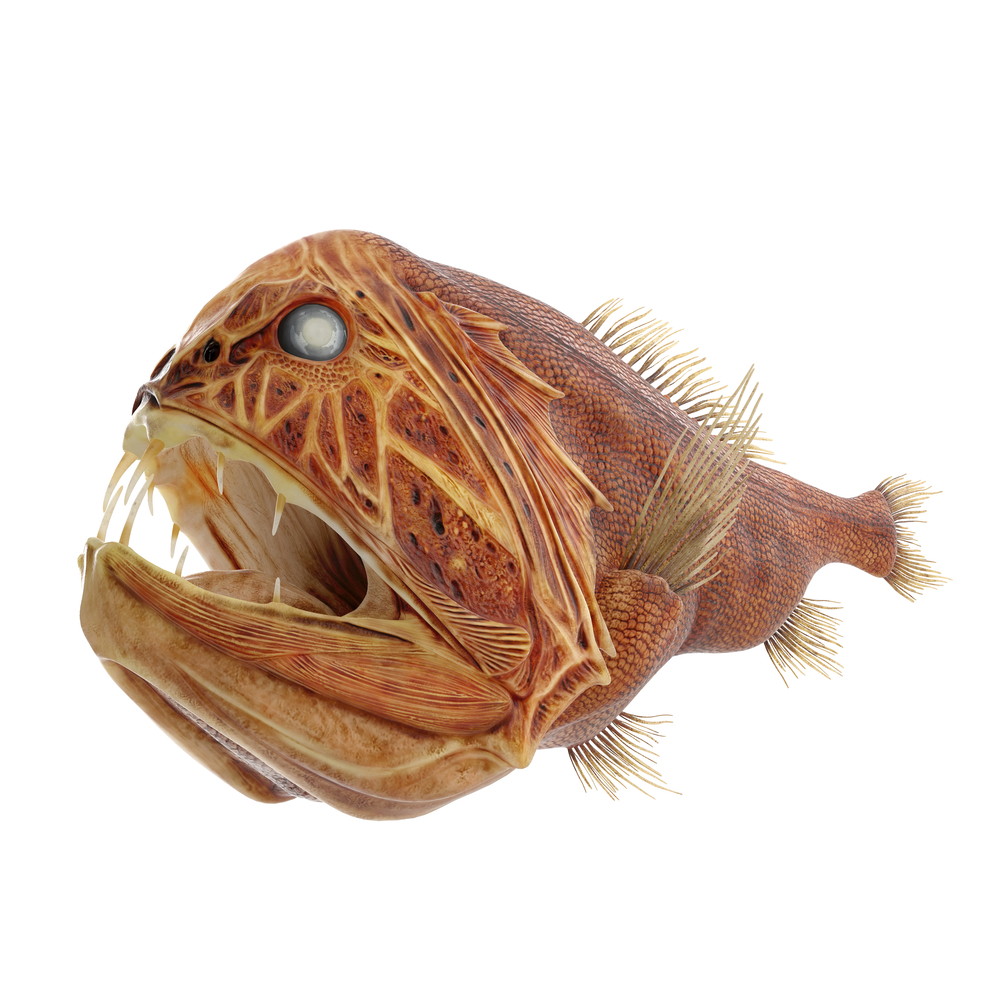
Picture a fish with teeth so large it can’t close its mouth, and you’ve got the fangtooth fish. Despite its small size, this fearsome-looking creature is among the deep sea’s most ferocious predators, boasting a set of teeth proportionally larger than any other fish. Found in the world’s deepest ocean waters, fangtooth fish navigate the dark with their oversized jaws and heightened senses. Their dark, chocolate-brown color aids in keeping them hidden as they ambush unsuspecting prey.
Unlike many other deep-sea dwellers, fangtooth fish have relatively large brains and rely heavily on their acute sense of smell to hunt in the blackness of their environment. Despite their rather intimidating appearance, they don’t pose any threat to humans, primarily due to their small size. The fangtooth’s adaptability and survival in extreme conditions make it an intriguing subject for scientists studying the mysteries of ocean life. They’re a perfect example of how the deep sea can turn out some truly unique and fascinating creatures.
7. The Deep-Sea Dragonfish: Light in the Darkness
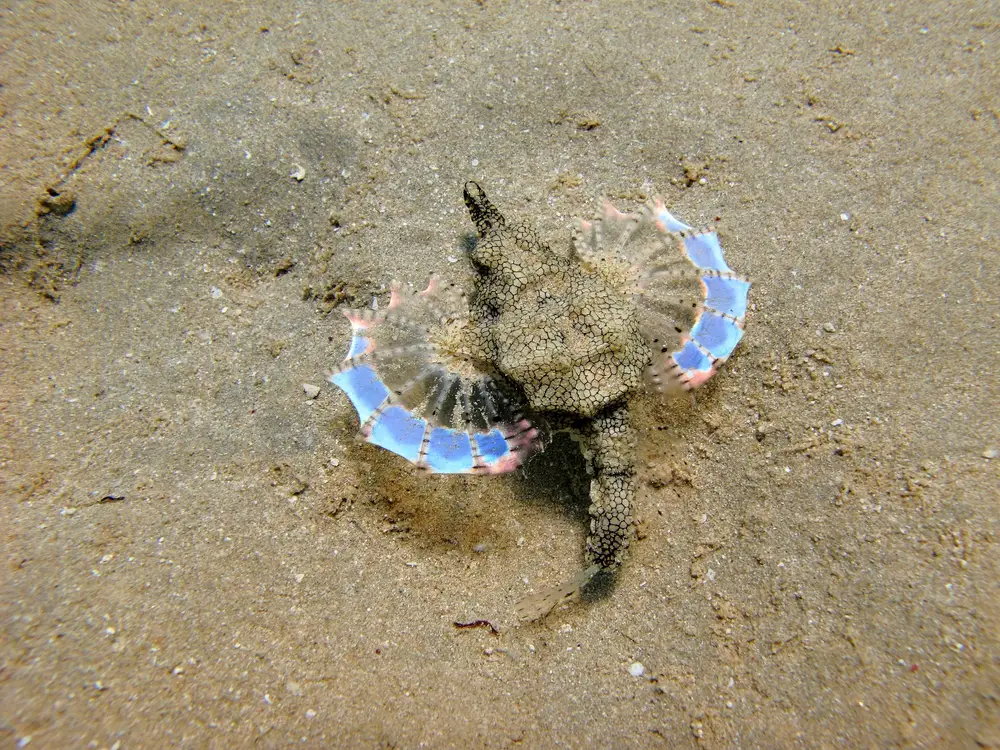
Welcome to the dragonfish, the ocean’s own bioluminescent marvel. This creepy yet captivating creature inhabits the deep-sea layers and uses its own built-in lights to navigate the darkness and lure prey. Its fang-like teeth and expandable jaw make it a formidable predator in the depths where sunlight never reaches. Dragonfish are equipped with photophores, special light-emitting organs that help them communicate, hunt, and even camouflage themselves from predators.
This fish takes bioluminescence to the next level; unlike other deep-sea creatures, it can produce a red light, invisible to most of its prey but allowing it to hunt stealthily. Despite its fearsome appearance, the dragonfish is small, growing only to about six inches, but it perfectly embodies the dark, mysterious world of the deep sea. Scientists continue to study this creature to understand how it survives in such a harsh environment and what its bioluminescent capabilities could teach us about similar adaptations in other species. It’s a shining example of nature’s ingenuity in the ocean’s darkest depths.
8. The Barreleye Fish: The Fish With a See-Through Head
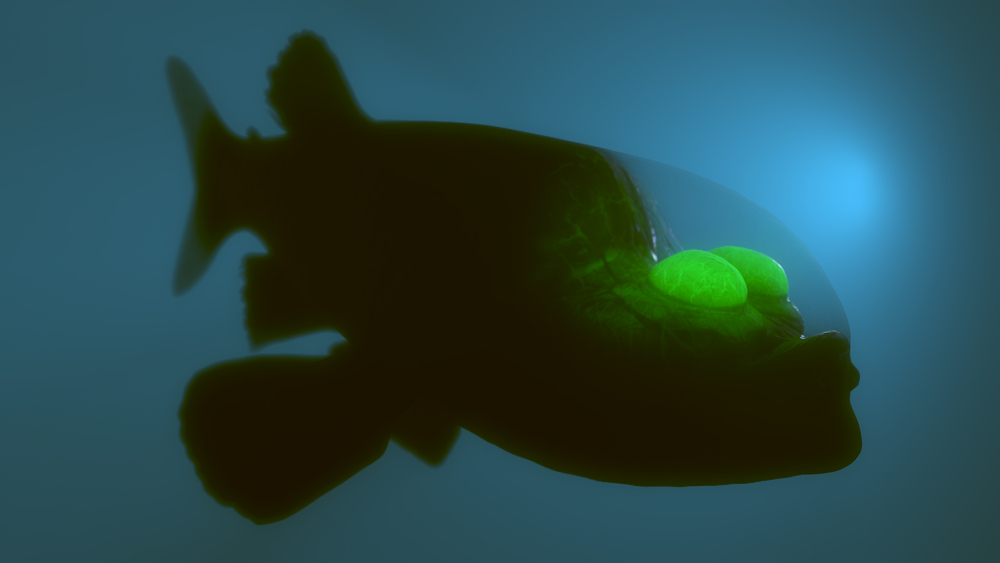
Imagine having a fish tank where the fish itself is the window! Meet the barreleye fish, known for its transparent head that lets you peer right into its brain. Found deep in the Pacific Ocean, this fish has evolved a head that is literally see-through to give it an advantage in the dark. Its tube-shaped eyes, protected within a transparent dome of soft tissue, can look upwards to spot the silhouettes of prey against the faint light above.
The barreleye fish is as much a mystery as it is a marvel, with its almost alien-like appearance. Researchers believe this extraordinary adaptation helps it to detect faint traces of bioluminescence emitted by other deep-sea creatures. Enabling it to hunt effectively in its pitch-black environment, the barreleye’s transparent head is a remarkable solution to the challenges of deep-sea living. It’s both a bizarre and ingenious design that highlights the ocean’s endless capacity for producing fascinating adaptations.
9. The Dumbo Octopus: Disney’s Ocean Inspiration
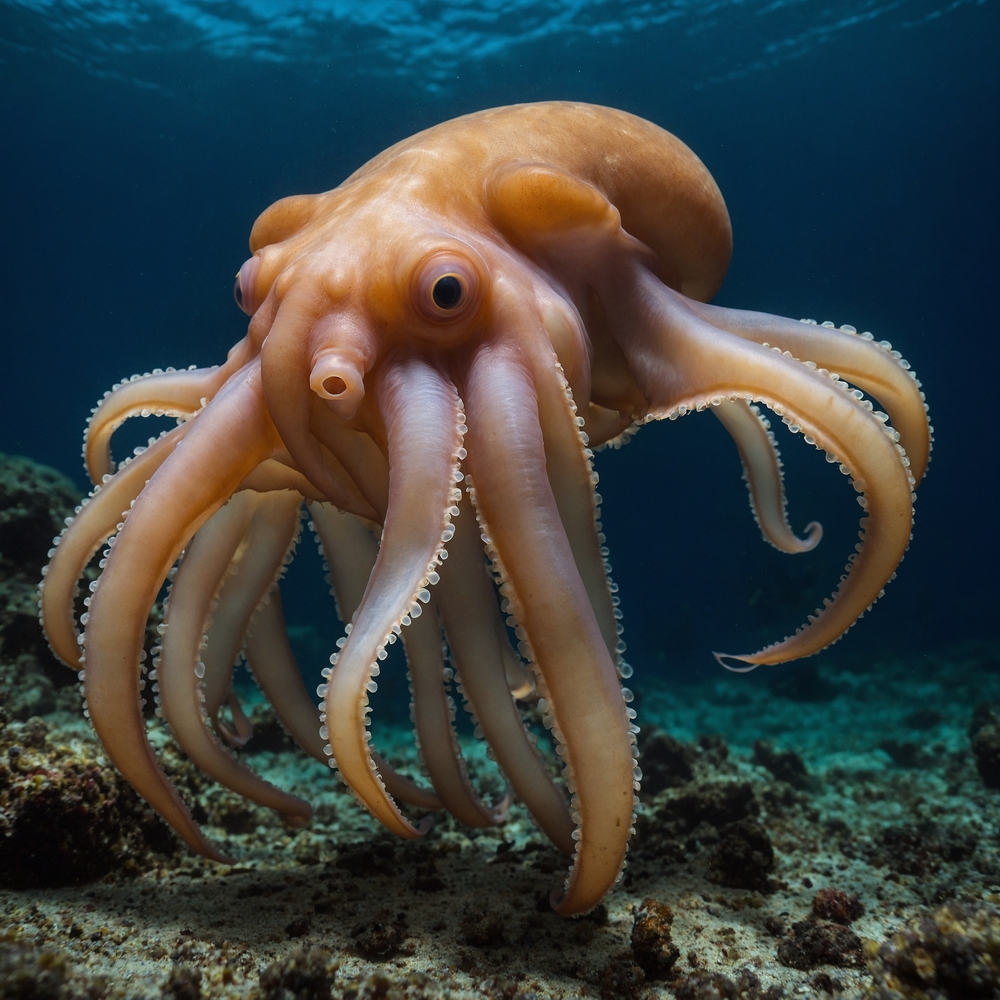
Meet the dumbo octopus, the endearing creature that might just remind you of a beloved Disney character. With ear-like fins that resemble the big-eared elephant, this deep-sea dweller charms with its adorable appearance despite living miles beneath the waves. Found at depths greater than 13,000 feet, the dumbo octopus glides gracefully through the water, using those unique fins to move in a way that seems almost magical. It’s a rare sight, as it inhabits some of the ocean’s most extreme environments, but its whimsical appearance has captured the hearts of scientists and ocean lovers alike.
The dumbo octopus is not just a pretty face; it’s a remarkable example of adaptation in the deep ocean. With a gelatinous body designed to withstand high pressure and scarce food sources, it’s well equipped for life in the abyss. Unlike other octopuses, the dumbo octopus doesn’t have an ink sac—there’s no need for such defenses so deep. Instead, it relies on its agile movements and unique lifestyle to thrive. A true wonder of the deep, this octopus is a reminder of the enchanting diversity hidden beneath the waves.
10. The Deep-Sea Blobfish: The Ocean’s Unlikely Celebrity
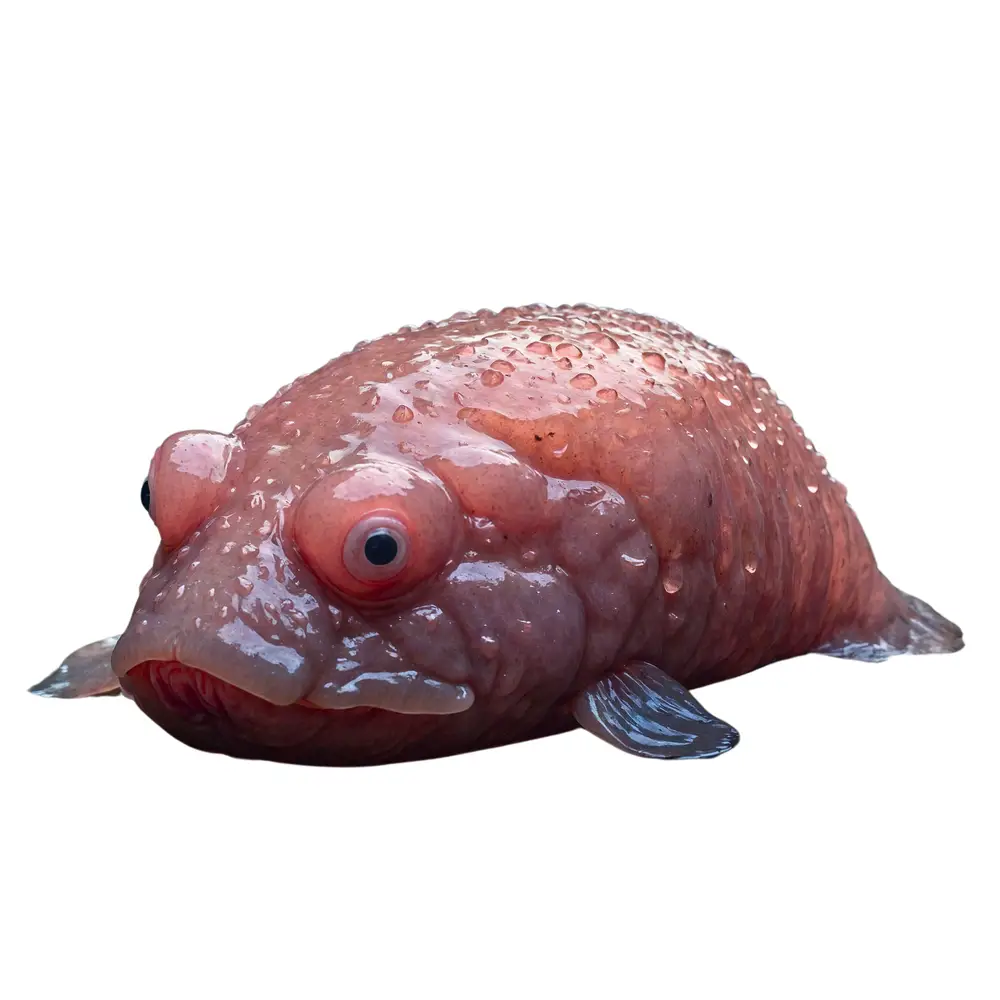
You’ve probably seen the blobfish’s face on the internet, often dubbed the “world’s ugliest animal,” but there’s so much more to this deep-sea dweller than its unfortunate mugshot. Found off the coasts of Australia and New Zealand, this gelatinous fish is perfectly adapted to life at depths of up to 4,000 feet. Its low-density flesh allows it to float just above the ocean floor without expending much energy. In its natural environment, the blobfish looks like a normal fish, but once removed from the high-pressure deep-sea habitat, it transforms into the droopy, meme-worthy creature we all know.
The blobfish’s unique appearance is a testament to the incredible ways life adapts to survive in the deep ocean. It feeds on invertebrates that float by, drifting slowly with the ocean currents. Though it may be the butt of many jokes, the blobfish plays a vital role in its ecosystem, showcasing the importance of even the most unusual creatures. Its comical appearance is just one more example of the ocean’s boundless creativity, reminding us that beauty truly is in the eye of the beholder.
